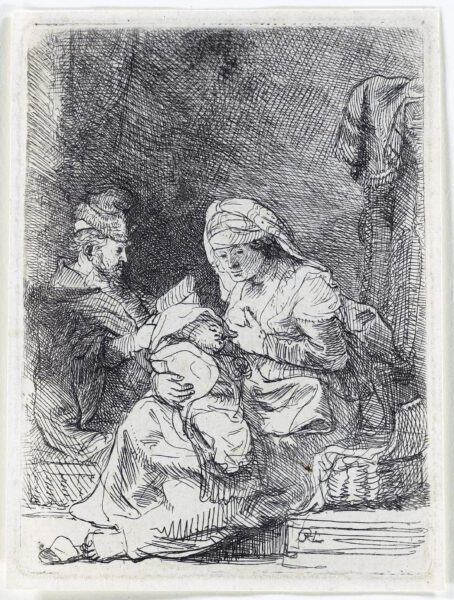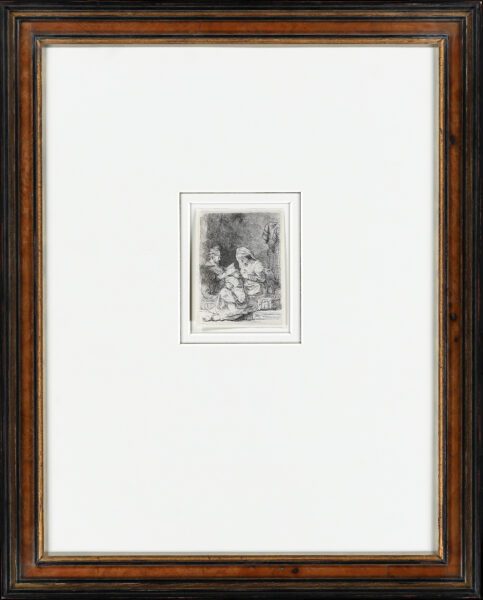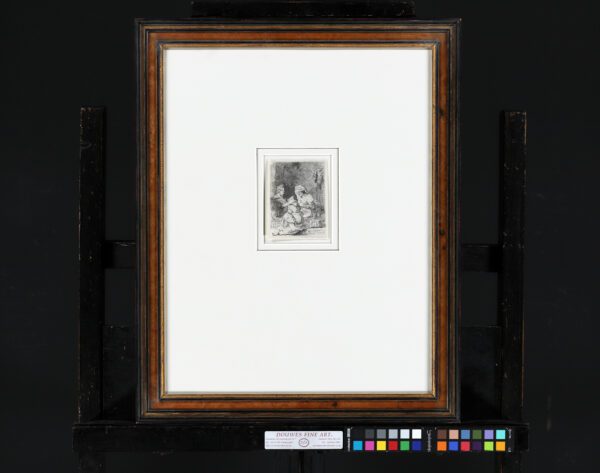“The Holy Family”, c. 1632
signed in monogram lower right: RHL
etching: 10,2 x 7,6 cm;
with small margins on all four sides.
"*" indicates required fields
Notes
During his lifetime, Rembrandt’s extraordinary skills as a printmaker were the main source of his international fame. Unlike his oil paintings, prints travelled light and were relatively cheap. For this reason, they soon became very popular with collectors not only within, but also beyond the borders of the Netherlands.
This etching dates from Rembrandt’s mid-20s, when he left his native Leiden to go to Amsterdam, where he would remain for the rest of his life. At the time, he was a rising star in Dutch art. Rembrandt had a great gift for conveying intimacy with just a few etched lines.
Here he places the Holy Family in a setting of comfortable domesticity – so comfortable, in fact, that Mary has kicked off her shoe while breastfeeding the Baby Jesus. Her work basket is open beside her, while Joseph nearby is reading a book as nonchalantly as his modern equivalent would a newspaper. This etching is so lacking in the traditional symbols of divinity such as haloes that one might mistake it for an ordinary scene of tranquil Dutch domestic life. Thus Rembrandt humanises the sacred to make it more accessible.
The background of the featureless interior is enveloped in a transparent web of shifting shadow, while Rembrandt uses areas of blank white paper to focus light on Mary and the child. The delicate play of light and shadow over Mary’s features subtly heightens her musing, reflective expression.
Literature
Bartsch 62; Hind 95;
The New Hollstein, 2013, no. 114 (this impression cited), only state;
Plate not in existence – with Nowell-Usticke (1967):
RR – A very scarce, attractive print
Provenance
- With Mayfair Kunst A.G. (Ira Gale), Zug.
- Sam Josefowitz (Lugt 6094); acquired from the above in 1970;
- then by descent to the present owners.
- Christie’s London
- Private collection, The Netherlands





